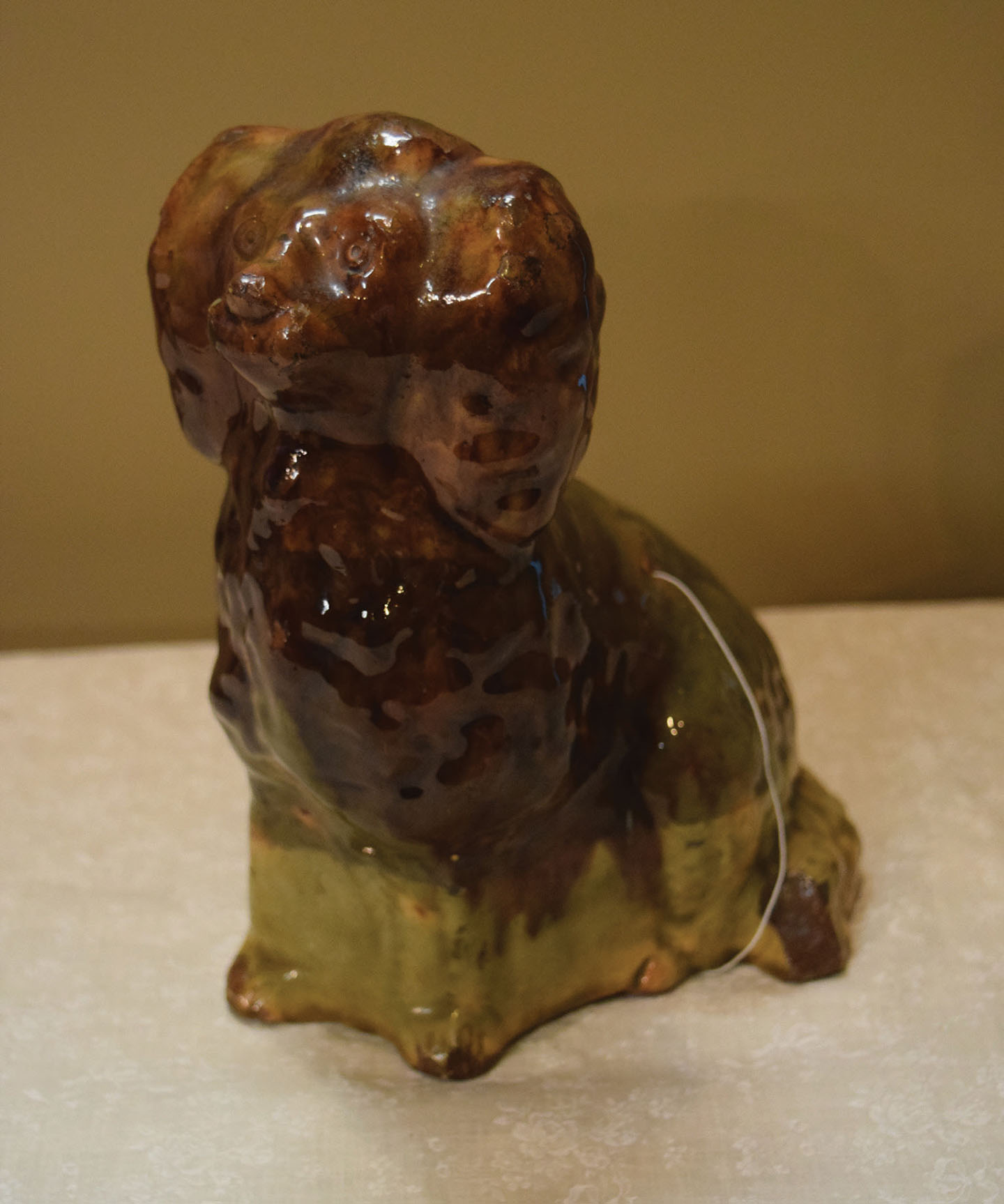Item Medium
Sculpture; Sculpture Stone
Item Origin
Jo Daviess County
Item Duration at Mansion
Temporary
Summary
Lead glazed stoneware, 9 × 7 inches, Collection of Galena-Jo Daviess County Historical Society
Item Medium
Sculpture; Sculpture Stone
Item Origin
Jo Daviess County
Item Duration at Mansion
Temporary
Some utilitarian pottery made in Illinois in the nineteenth century was whimsical as well as useful. This small redware sitting dog, with head facing straight forward and round incised circles for eyes, functions as a string or yarn holder. Threads from the ball, placed inside, were pulled through two small holes on its back. Made in the Galena area of local clay, the dog wears a coat of green and brown spotted glaze. Formed in a mold, it was made in imitation of those produced in the Staffordshire district of England.
The presence of distinctive red clay and the abundant availability of lead ore in the Galena area supported the production of a regional redware pottery in Jo Daviess County commonly referred to as "Galena Pottery"—a common utilitarian, low-fired, red-paste earthenware with a clear lead glaze. (The word galena means sulfide of lead.) Glazes were rich and varied, particularly those acquiring haphazard coin spots or splatters of brown during firing.
Although several potters worked in the Galena area by 1850, the major redware producer in the region was the D. A. Sackett Company, often referred to as the Galena Pottery Company. Established in Galena in 1843 and, although not continuously owned by the Sackett family, the company remained in business through the late 1890s. There were additional potteries in the nearby small village of Elizabeth.
Items commonly produced in the Galena area included bowls, wide-mouth storage jars, jugs, preserve jars, butter churns, and bottles. Flower pots, chamber pots, and spittoons were made on a smaller scale. Drainage tiles, used by farmers to remove excess water from their fields, were another common product.
All wares were manufactured using hand production methods. The earliest wares bore few decorations, although some had simple thumbnail impressions and coggle wheel patterns. Later wares featured a wider range of decorative techniques, including varied coggle wheel decorations, colored glazes, or appliqued decorations. Preserve jars and crocks often featured thick edge moldings or grooved necks; flower pots were rimmed with piecrust molding.
Although redware production in Illinois declined dramatically by the 1860s, the industry continued in the Galena region through the nineteenth century. The substantial growth of the dairy industry in northern Illinois and nearby Wisconsin, which utilized a large quantity of milk pans and churns, is one hypothesis to explain the lasting demand. The farm wife used milk pans for separating cream from milk placed in the large bowls; churns were needed to process milk fat (cream) into butter
Item Medium
Sculpture; Sculpture Stone
Item Origin
Jo Daviess County
Item Duration at Mansion
Temporary


